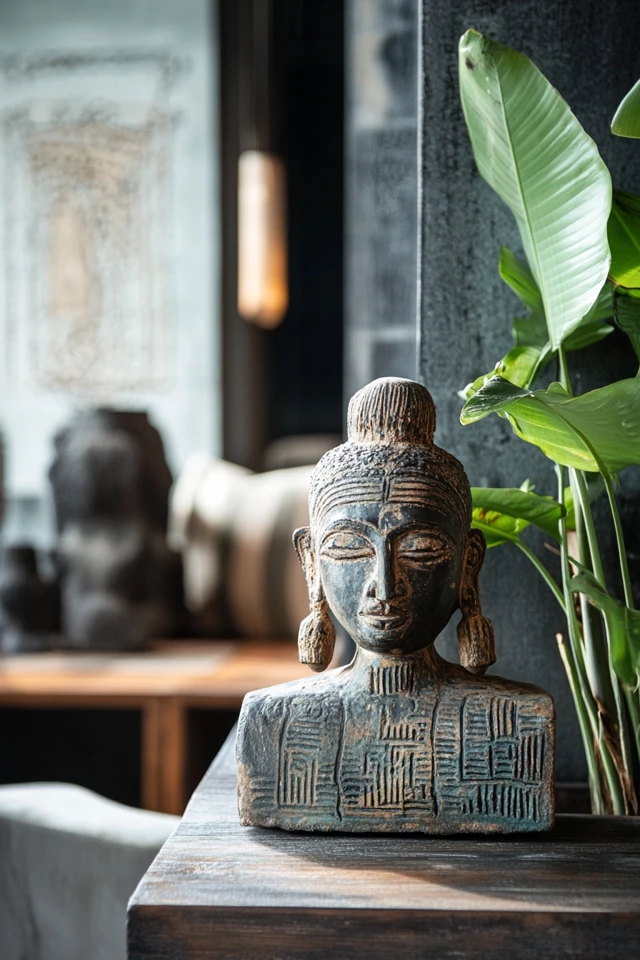Adding cultural elements to your decor is one of the most meaningful ways to make your home feel unique and personal. It tells a story—whether it’s about your own heritage, travels, or a culture you admire. When done thoughtfully, it can transform a generic space into a vibrant, soulful environment.
When I started incorporating cultural decor into my home, I was hesitant at first. I didn’t want the space to feel mismatched or overwhelming. But by focusing on a few key pieces and weaving them into my existing style, I found the perfect balance. Whether it was a handwoven rug from Morocco or ceramic pottery inspired by Mexico, each item brought warmth and meaning to the space.
In this blog post, I’ll share 10 actionable tips for incorporating cultural elements into your decor while maintaining cohesion and style.
Why Incorporate Cultural Decor?
Cultural decor is more than just aesthetics—it’s about celebrating history, craftsmanship, and diversity. Here’s why it matters:
- Personal Connection: Showcasing items tied to your heritage or travels makes your home uniquely yours.
- Artisan Craftsmanship: Many cultural pieces are handmade, adding authenticity and value to your space.
- Conversation Starters: A room filled with cultural elements invites stories and meaningful conversations.
1. Start With a Cultural Theme or Region
Why It Matters:
A clear focus helps you choose items that work together rather than feeling random.
How to Do It:
- Pick a specific culture, region, or style you want to highlight (e.g., Scandinavian, Japanese, Moroccan, or Indian).
- Research traditional patterns, colors, and materials from that culture.
- Use Pinterest or Instagram for visual inspiration.
Pro Tip: You can also combine elements from multiple cultures, but aim for a harmonious blend by sticking to a similar color palette or design style.
2. Incorporate Textiles With Global Patterns
Why It Matters:
Textiles like rugs, throws, and cushions are one of the easiest ways to add cultural flair.
How to Do It:
- Use kilim rugs or Beni Ourain carpets for a Moroccan-inspired look.
- Try ikat pillows or batik fabrics for Southeast Asian vibes.
- Layer Mexican serapes or Indian kantha quilts for a bohemian touch.
Pro Tip: Mix and match patterns thoughtfully—pair bold prints with neutral colors to avoid a cluttered look.
3. Add Handcrafted Ceramics and Pottery
Why It Matters:
Artisan ceramics add texture and authenticity to any room.
How to Do It:
- Display Talavera tiles or pottery from Mexico in your kitchen or as wall art.
- Use Japanese tea sets or bowls as functional decor in your dining room.
- Incorporate African mud-clay vases for sculptural interest.
Pro Tip: Group similar pieces together to create a curated, cohesive display.
4. Display Art That Reflects Cultural Heritage
Why It Matters:
Art adds personality and instantly connects a space to a cultural theme.
How to Do It:
- Frame and hang traditional paintings, tribal art, or calligraphy.
- Use tapestries or wall hangings with regional motifs as a focal point.
- Add modern art inspired by traditional themes for a contemporary twist.
Pro Tip: Mix in family heirlooms or personal pieces for a more meaningful collection.
5. Incorporate Global Furniture Designs
Why It Matters:
Furniture can set the tone for an entire room.
How to Do It:
- Choose low-slung Japanese-inspired seating for a zen-like atmosphere.
- Opt for Moroccan poufs or Indian carved wooden stools as accent pieces.
- Include Scandinavian-style mid-century furniture for a minimalist aesthetic.
Pro Tip: Balance cultural pieces with modern or neutral furniture to avoid an overly themed look.
6. Bring in Cultural Lighting Fixtures
Why It Matters:
Lighting is functional but can also serve as a striking design feature.
How to Do It:
- Hang Moroccan lanterns or pierced metal pendants for ambient light.
- Use paper lanterns or shoji lamps for a soft, Japanese glow.
- Try Scandinavian-inspired pendants for clean, minimalist lines.
Pro Tip: Use dimmable bulbs to control the mood and highlight the texture of the fixtures.
7. Celebrate Nature With Plants and Greenery
Why It Matters:
Plants can evoke the natural beauty of a specific region.
How to Do It:
- Use cacti and succulents for a Southwestern or desert-inspired look.
- Incorporate bonsai trees or bamboo for an Asian touch.
- Choose Mediterranean herbs like lavender, rosemary, or olive trees.
Pro Tip: Pair plants with culturally inspired planters—think terra cotta pots or painted ceramics.
8. Mix Modern and Traditional Decor
Why It Matters:
Combining old and new keeps your space from feeling like a museum.
How to Do It:
- Pair a vintage tribal rug with a sleek, modern sofa.
- Display traditional ceramics on contemporary floating shelves.
- Use minimalist frames to display intricate traditional artwork.
Pro Tip: Let one style dominate—use modern decor as the base and sprinkle in traditional elements.
9. Use Color Strategically
Why It Matters:
Many cultures are known for their distinct color palettes, and incorporating them can set the tone for your space.
How to Do It:
- Use bold jewel tones like turquoise, crimson, and gold for Indian or Moroccan styles.
- Opt for neutral tones like beige, gray, and white for Scandinavian or Japanese decor.
- Incorporate bright reds and yellows for Chinese-inspired spaces.
Pro Tip: Balance vibrant colors with neutral backdrops to keep the space cohesive.
10. Add Meaningful Travel Souvenirs
Why It Matters:
Souvenirs add a personal and authentic touch to your decor.
How to Do It:
- Display small items like handmade baskets, wooden figurines, or woven fans on open shelves.
- Incorporate larger pieces like textile wall hangings or ceramic vases as statement items.
- Share their story—arrange pieces alongside photos or notes about your travels.
Pro Tip: Rotate souvenirs seasonally or as your collection grows to keep the space fresh.
Picture Gallery
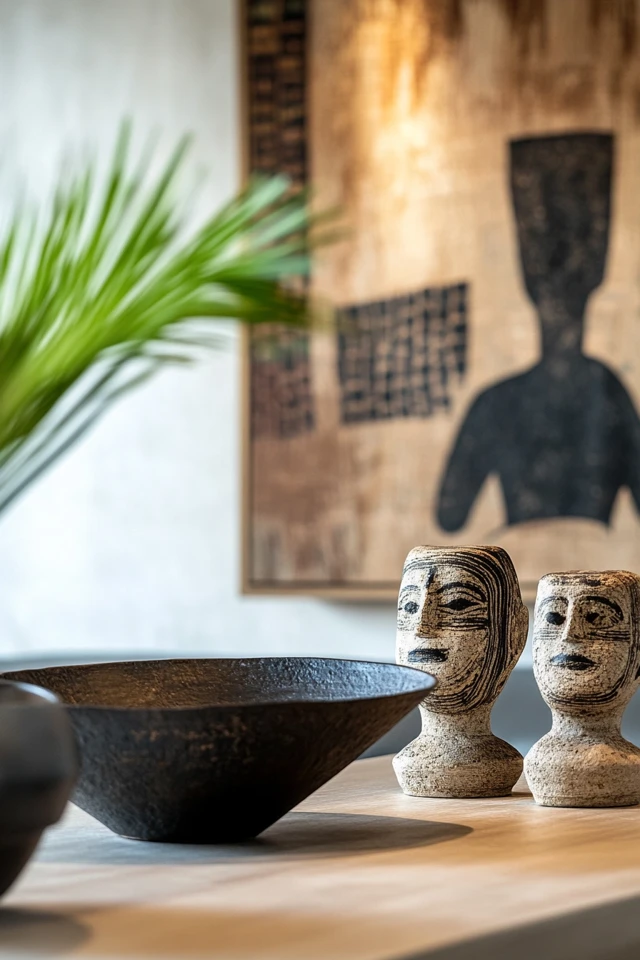
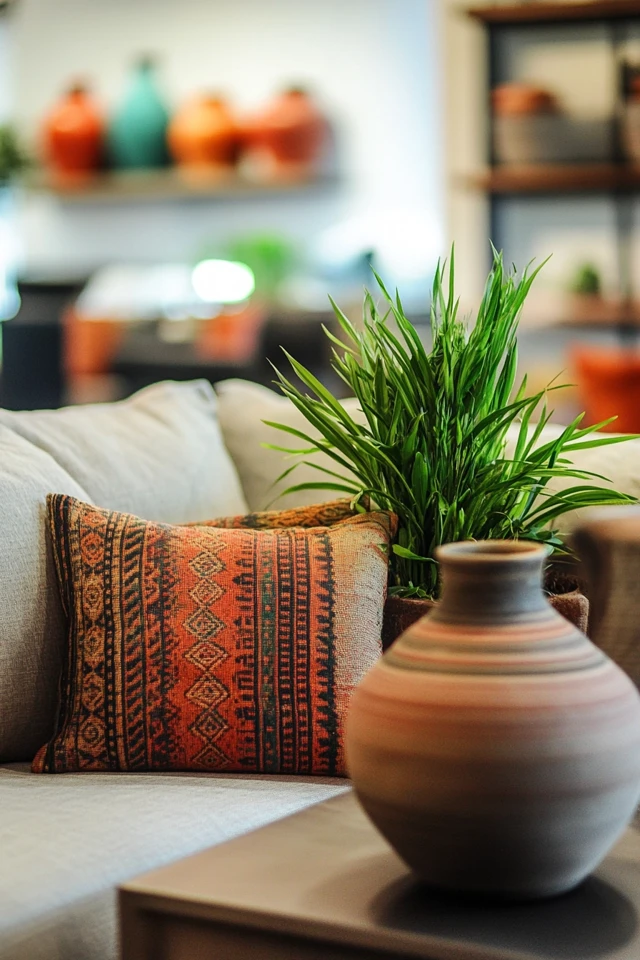
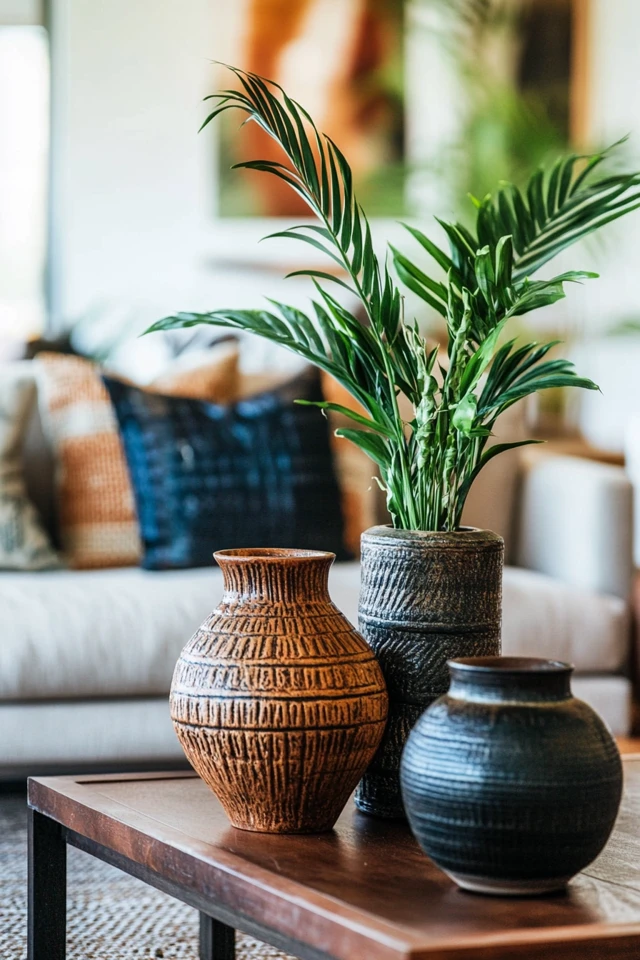
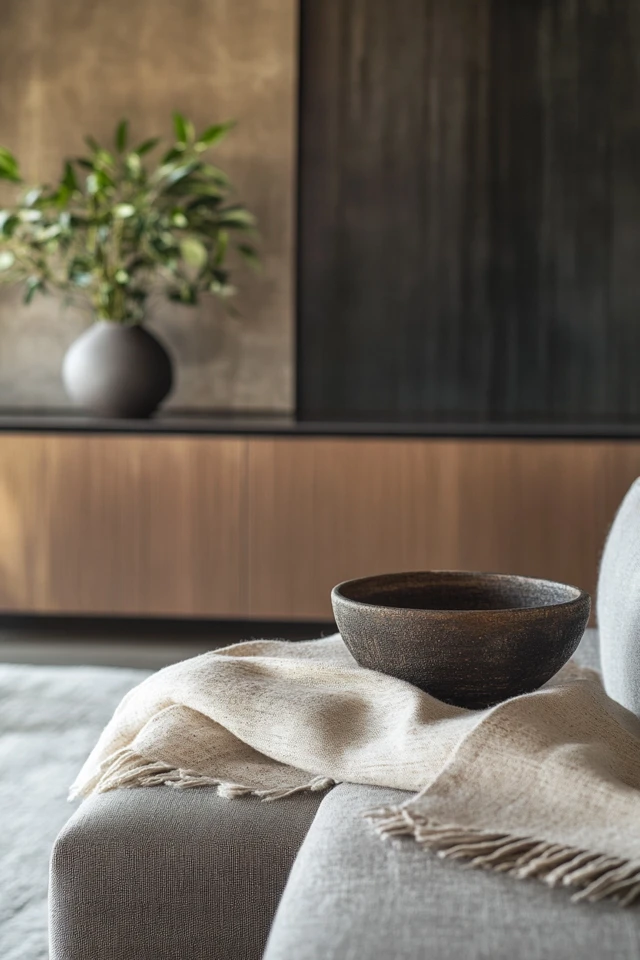
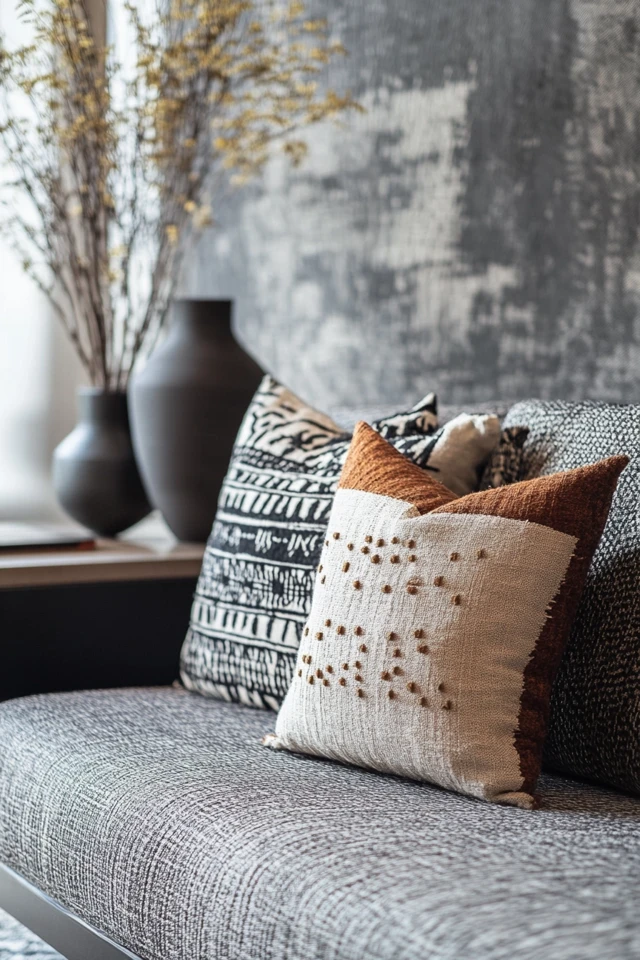
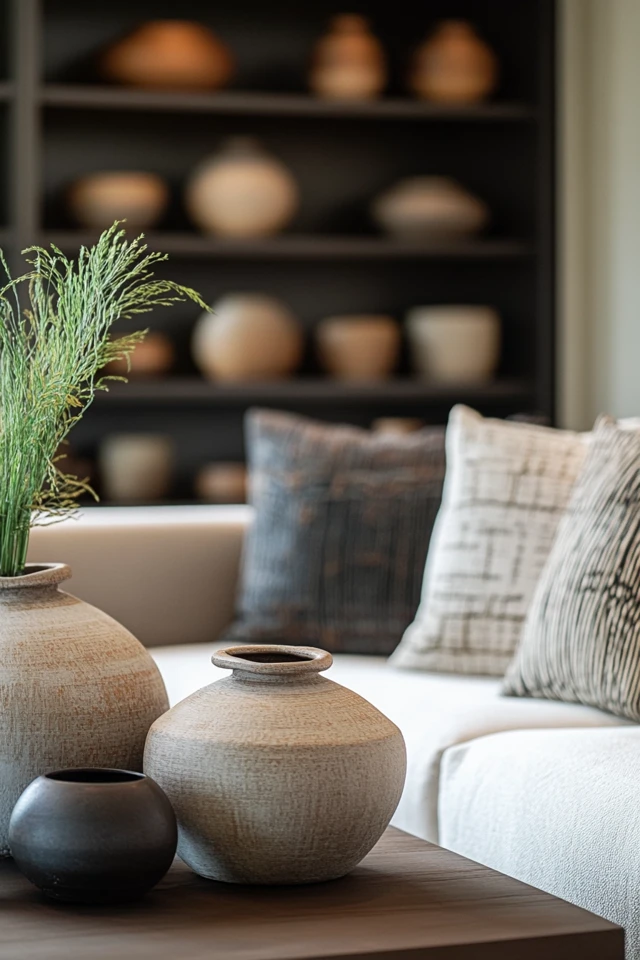
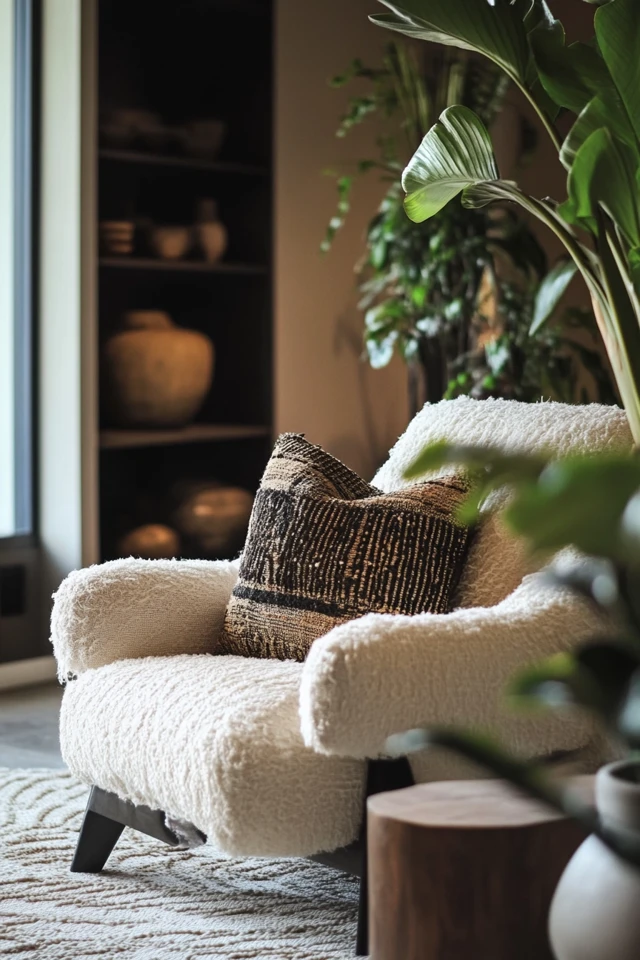
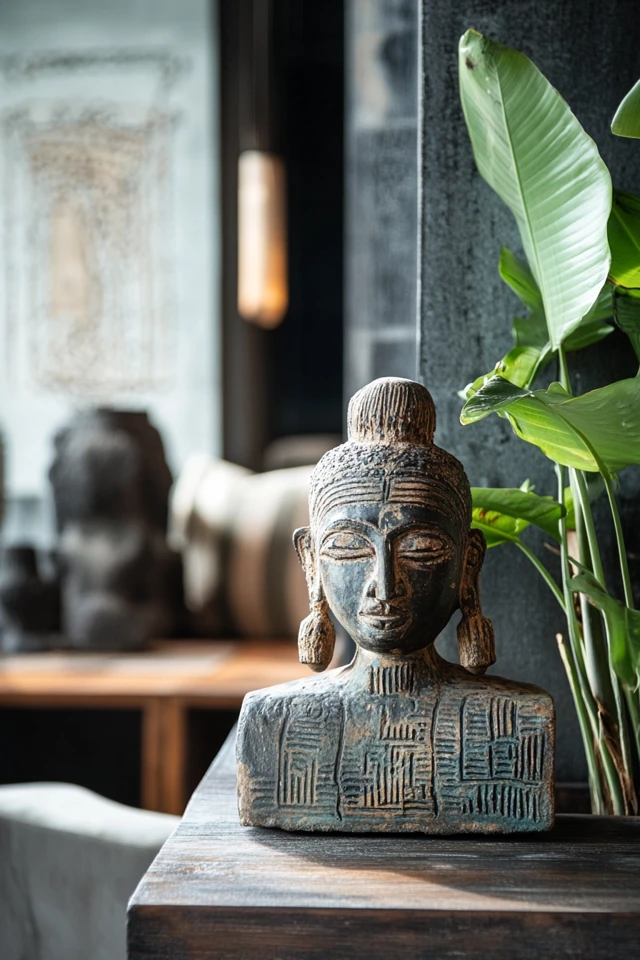
Conclusion
Incorporating cultural elements into your decor is an art that requires balance, intention, and respect. By choosing key pieces, blending traditional and modern styles, and personalizing your space, you can create a home that reflects your personality and celebrates the beauty of global traditions.
Remember, cultural decor isn’t just about aesthetics—it’s about storytelling. Whether you’re honoring your heritage or drawing inspiration from a place you’ve visited, each piece in your home has a story to tell.
FAQs
1. How do I start incorporating cultural decor into my home?
Begin by choosing one or two cultural themes or elements that resonate with you, and add small items like textiles or pottery to your existing space.
2. Can I mix decor from different cultures?
Yes! Combine items with complementary colors or materials for a cohesive look. Aim for balance and avoid overwhelming the space with too many themes.
3. Where can I find authentic cultural decor?
Shop at local artisan markets, fair trade stores, or online platforms that support global artisans. Consider collecting items during your travels for a personal touch.
4. How do I avoid cultural appropriation in my decor?
Research the cultural significance of the items you choose and support authentic artisans or businesses from those communities. Be mindful of context and use pieces respectfully.
5. Can cultural decor work with minimalist interiors?
Absolutely! Focus on one or two standout pieces, such as a patterned rug or handcrafted pottery, to add depth and personality without overwhelming the space.

